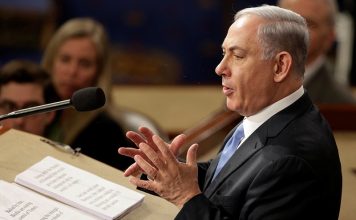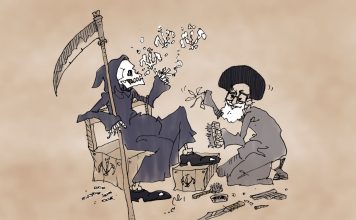By Kayhan Life Staff
On Sept. 19, students from several universities across Iran joined widespread protests over the death of Mahsa Amini, a 22-year-old ethnic Kurd who died three days after allegedly being beaten by morality police in Tehran.
A day earlier, people in several Iranian cities, including Saqqez and Divandarreh in the western province of Kurdistan, poured into the streets protesting Amini’s death.
“Azerbaijan is awake, it stands behind Kurdistan.” #Iranians hailing from all ethnicities have united in overthrowing the Islamic Republic after its murder of #MahsaAmini #Urmia, #Iran pic.twitter.com/kGY8fVcrri
— Alireza Nader علیرضا نادر (@AlirezaNader) September 21, 2022
The morality police detained Mahsa (Zhina) Amini, a native of Saqqez, outside a metro station in Tehran on Sept. 13 for allegedly violating the Hijab Law.
According to eyewitness accounts, Ms. Amini was beaten while being transported in a police van. She died in hospital on Friday, Sept. 16, after spending three days in a coma.
Photographs and footage posted on social media showed angry protesters blaming the state for Amini’s death.
Students at several of Tehran’s universities protested the death of Mahsa Amini, including those at the Amirkabir University of Technology (formerly Tehran Polytechnic), Shahid Beheshti University (formerly National Iranian University), Tarbiyat Modares University, and Tehran University.
Basij (volunteer militias) reportedly tried to disrupt student protests at Tarbiyat Modares University by playing recordings of prayers over the university’s loudspeakers. Basij security forces reportedly attacked protesting students at the Amirkabir University of Technology. However, they failed to prevent the students from shouting anti-government slogans, including “Basijis, get lost.”
Students at the Isfahan University of Technology also held a large protest on Sept. 19.
Footage posted on social media showed protesting students shouting “death to the dictator,” “cannons, tanks, bullets, clergy must go,” “Kurdistan, Kurdistan, the eye, and light of Iran,” “women, life, freedom,” and “right of clothing.”
A tweet by Kayhan London on Sept. 19 said: “Students from the National Iranian University protesting outside the university compound: 1,500 people. Our November’s dead. #Nationwide protest.”
The tweet included footage showing a large crowd chanting “death to the dictator” and “our November’s dead.”
In another tweet posted the same day, Kayhan London said: “Kurdistan, Kurdistan, the eye, and light of Iran. #MahsaAmini. Monday, Sept. 19. Students at the National University of Iran (Beheshti) protested Mahsa Amini’s death at the state’s hands. They shouted slogans to support Kurdistan Province.”
The tweet included footage of protesters, their faces pixelated, shouting “Kurdistan, Kurdistan, the eye and light of Iran” and “freedom in life.”
Police and security forces reportedly attacked and brutalized protesters in several cities, including in Saqqez, the home of Mahsa Amini. They reportedly used tear gas and live ammunition against protesters shouting “death to the dictator.”
Told @VarneyCo that Americans stand with the brave Iranian protesters fighting against their murderous regime.
World leaders must warn Iran NOT to kill their people. pic.twitter.com/Fm4zWvfVo9
— Morgan Ortagus (@MorganOrtagus) September 20, 2022
Protesters in Divandarreh reportedly fought against the armed police with their hands and stones.
Many people were apparently injured in Saqqez and Divandarreh. However, the exact number of people hurt during the ongoing protest is unknown.
“Bullets are the answer to people demanding freedom,” another tweet by Kayhan London said.
The tweet included footage of a large crowd of protesters. What sounded like gunshots were heard in the distance. An unidentified man can be heard off camera, saying: “It is war. The bastard [police and security] agents are attacking.”
Shops in several cities in Kurdistan Province, including Sanandaj, Saqqez, Divandarreh, Baneh, and Marivan, closed on Sept. 19 in protest. Merchants in other cities across the country joined the protest by closing their stores, including many in Urmia, Bukan, and Piranshahr (in the northwestern province of West Azerbaijan) and Kermanshah and Javanrud (in the western province of Kermanshah.)
Footage circulating on social media suggests that protests following #Mahsah_Amini's death have occurred in 19 of #Iran's 31 provinces within the past three days. A thread: 1/5 pic.twitter.com/bJxZAk4zbs
— Critical Threats (@criticalthreats) September 20, 2022
A tweet by Kayhan London on the same day said: “For Mahsa and against the Islamic Republic; widespread protest and national mourning. Bazaars in several cities closed, following the announcement of widespread protest and national mourning, sparked by the state’s killing of Mahsa Amini (Zhina).”
The tweet included an undated video clip taken in a moving vehicle of a long row of stores that appeared to be closed. An unidentified man speaking off camera says: “Sept. 19, Piranshahr.”
Women’s rights activists called on people to join their protests on Sept. 19 at the intersection of Hijab Avenue and Keshavarz Boulevard in Tehran.
Crown Prince Reza Pahlavi released a statement on Sept. 17 supporting the protests over Mahsa Amini’s death, in which he said: “This shared sentiment, this national covenant, and this national anger signify the nation’s resolve in staying steadfast to the end in demanding its rights. This 43-year-old struggle was illuminated by Neda’s blood and will not end with Mahsa’s blood.”
“We must, now more than ever, combine this covenant and anger with national unity and hope for a future devoid of Islamic Republic’s oppression and injustice,” he added.
Neda Agha-Soltan, a 26-year-old aspiring music student, was reportedly shot and killed by a Basij member on June 20, 2009, as she watched street protests some distance away.
In a separate statement on Sept. 18, Empress Farah Pahlavi said: “Following an announcement by Crown Prince Reza Pahlavi, I also declare Sept. 18 and 19 national days of mourning in memory of Zhina and all Iranian children who have lost their lives.”
Meanwhile, the lead investigator in Mahsa Amini’s case, Brigadier-General Majid Mir-Ahmadi, the Deputy Interior Minister for Security Affairs, has threatened to prosecute anyone contradicting the state’s version of the events surrounding her death.
In comments reported by semi-official Fars news agency on Sept. 18, General Mir-Ahmadi, said: “Anyone disseminating information that will later prove to contradict the truth about the event will naturally be investigated for agitating public opinion and endangering the mental health of society.”
Mir-Ahmadi’s superior, Interior Minister Brigadier-General Ahmad Vahidi, has also defended the authorities’ handling of Mahsa Amini’s case.
“The arrest was lawful,” General Vahidi argued. “We have received no reports about assaults occurring during the detention. Morality Patrol officers, who work under the auspices of FARAJA [the Law Enforcement Command of Islamic Republic of Iran] do not carry any compliance tools, including batons.”
In comments reported by state media on Sept. 19, Tehran Province Prosecutor Ali Alghasi-Mehr said: “While investigating the truth about this incident, we must take a serious look at false claims about the event.”
Protests over the death of Mahsa Amini are growing, with some 2 million tweets and retweets posted on #Mahsa_Amini by Sept. 18. The Twitter page has received 11 million “likes,” breaking the previous record held by #do-not-execute (campaign against capital punishment) in 2020.
Politicians, artists, and activists worldwide have posted messages on their Instagram and Twitter pages, condemning the death of Mahsa Amini, and supporting the protests. Several Iranian athletes and artists have also taken to social media to express outrage at Amini’s death.







